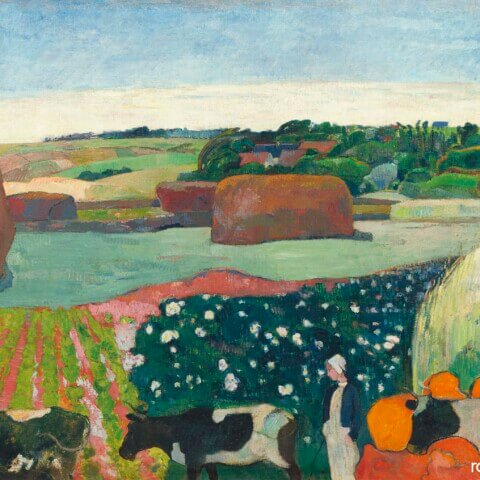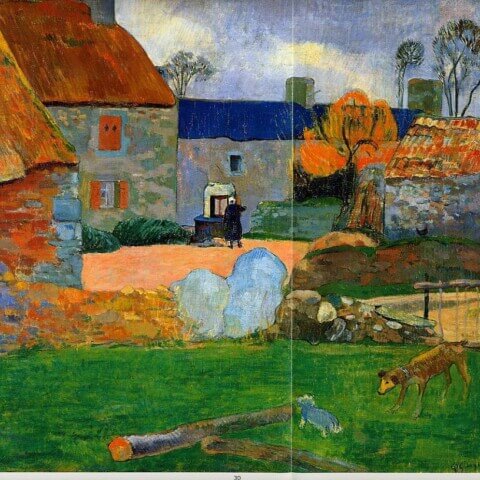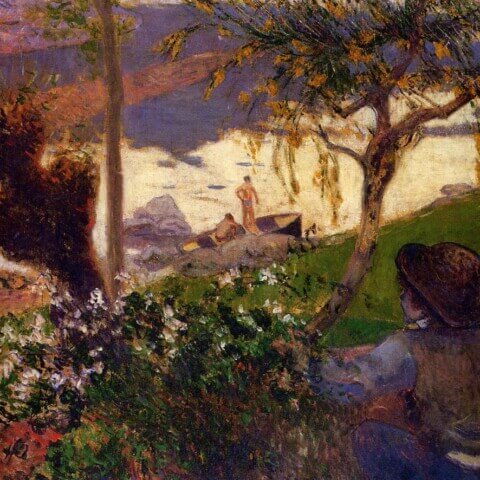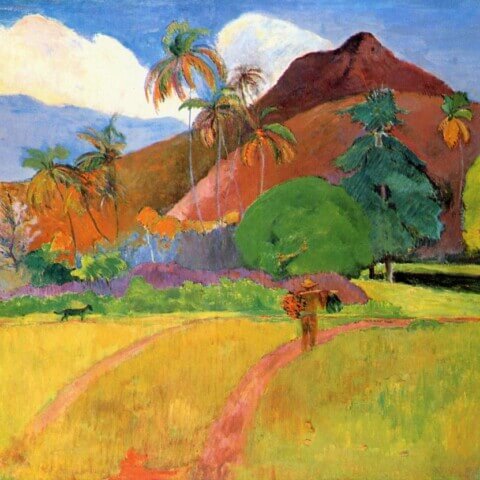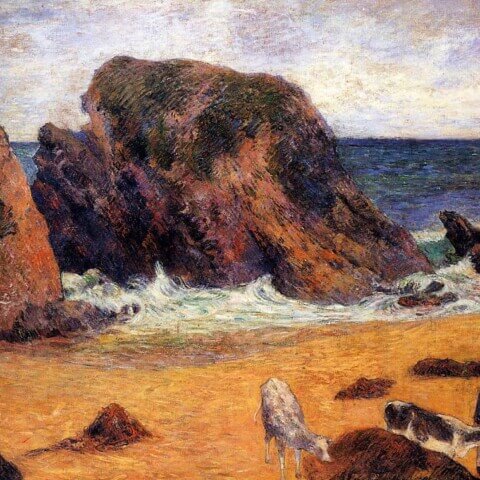Paul Gauguin
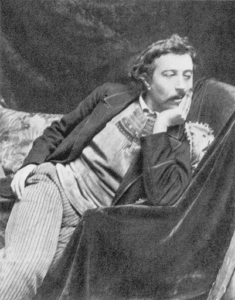
Paul Gauguin (1848-1903) was a preeminent figure in post-Impressionist painting during the late 19th and early 20th centuries. Known for his bold use of color and synthetist aesthetic, Gauguin played a pivotal role in shaping the modernist movement in art. He often challenged the boundaries of the western perspective and sought inspiration from non-European cultures, particularly in French Polynesia.
Gauguin’s style is characterized by its bold, symbolic, and non-realistic use of color, innovative compositions, and thematic exploration of primitivism and spiritualism. He eschewed the representational color palettes and techniques of Impressionism in favor of a more emotionally evocative approach. This culminated in his ‘synthetist’ style, where he synthesized or brought together color and form in a way that was emblematic, rather than realistic.
Born in Paris, Gauguin first pursued a career in the stock market before abandoning his profession and family to dedicate himself to painting. He lived in various locations including France, Martinique, and Tahiti, with his life in French Polynesia significantly influencing his art.
Gauguin is best known for works such as “Where Do We Come From? What Are We? Where Are We Going?” and “Tahitian Women on the Beach,” which demonstrate his innovative approach to color and form, as well as his interest in exploring existential questions.
His impact on the art world cannot be overstated, as he inspired generations of artists, including Pablo Picasso and Henri Matisse, and played a critical role in paving the way for the abstract expressionism of the 20th century. Today, his works are displayed in prestigious museums around the world, and his contribution to art history continues to be celebrated.


